 Welcome to Ogden Decks, the premier deck-building experts in Ogden, Utah. An exceptional deck deserves equally impressive furniture and decor. Choosing the right outdoor furniture can turn your deck into a luxurious retreat, perfect for relaxing, entertaining, and enjoying the beautiful Utah weather. In this comprehensive guide, we’ll explore the best outdoor furniture options for your deck, providing you with the insights you need to create a comfortable and stylish outdoor living space. Benefits of Quality Outdoor FurnitureBefore diving into specific furniture ideas, let's discuss the benefits of investing in quality outdoor furniture for your deck:
1. MaterialThe material of your outdoor furniture is crucial for durability, maintenance, and aesthetic appeal. Here are some popular options:
3. StyleChoose furniture that complements your deck’s design and your personal style. Whether you prefer modern, traditional, rustic, or eclectic, there are plenty of options to suit your taste. 4. Size and LayoutMeasure your deck to determine the appropriate size and layout for your furniture. Ensure there is enough space to move around comfortably and that the furniture doesn’t overcrowd the area. 5. MaintenanceConsider the maintenance requirements of your chosen furniture. Some materials, like teak and wrought iron, may require periodic treatments, while others, like plastic and aluminum, are low-maintenance. 6. ClimateKeep Ogden’s climate in mind when selecting outdoor furniture. Choose materials that can withstand temperature fluctuations, UV exposure, and occasional rain or snow. Best Outdoor Furniture Options for Decks1. Dining SetsOutdoor dining sets are perfect for enjoying meals al fresco with family and friends. Consider these options:
2. Leave Space for MovementEnsure there is enough space to move around comfortably. Avoid overcrowding the deck with furniture and leave clear pathways for easy access. 3. Consider ViewsArrange your furniture to take advantage of the best views from your deck. Position seating areas to face scenic vistas, gardens, or other focal points. 4. Use Multipurpose FurnitureOpt for furniture that serves multiple purposes, such as benches with storage, foldable tables, or ottomans that double as seating and storage. 5. Add Personal TouchesIncorporate personal touches like decorative pillows, outdoor art, or lanterns to make your deck feel like an extension of your home. Maintenance Tips for Outdoor FurnitureTo keep your outdoor furniture looking its best, follow these maintenance tips: 1. Regular CleaningClean your furniture regularly to remove dirt, dust, and debris. Use mild soap and water for most materials, and avoid harsh chemicals that can damage finishes. 2. Protect from the ElementsProtect your furniture from the elements by using covers, storing cushions indoors, and moving lightweight pieces to sheltered areas during inclement weather. 3. Treat Wood FurnitureTreat wood furniture with sealants or oils to protect it from moisture and UV damage. Follow the manufacturer’s recommendations for the best results. 4. Check for RustInspect metal furniture for rust and address any issues promptly. Use rust-resistant coatings or touch-up paint as needed to maintain the appearance and integrity of the furniture. 5. Store Seasonal ItemsStore seasonal items like cushions, rugs, and umbrellas during the off-season to prolong their lifespan. Keep them in a dry, sheltered area to prevent damage. Why Choose Ogden Decks for Your Deck Furniture and Decor Needs?At Ogden Decks, we are dedicated to helping you create the perfect outdoor living space. Here’s why you should choose us for your deck furniture and decor needs:
0 Comments
 Ogden, Utah, boasts stunning scenery and a perfect climate for enjoying the outdoors. What better way to embrace the beauty of your backyard than by creating a functional and stylish outdoor kitchen on your deck? Outdoor kitchens are no longer a luxury; they're an extension of your living space, allowing you to entertain, cook, and dine under the open sky. At Ogden Decks, we specialize in designing and building beautiful and functional decks. This comprehensive guide explores the exciting world of outdoor kitchens, helping you transform your Ogden deck into the ultimate outdoor living and entertaining space. Planning Your Culinary Oasis: Key Considerations Before firing up the grill on your new outdoor kitchen, consider these crucial factors:
Now, let's delve into the exciting world of outdoor kitchen design:
Creating an outdoor kitchen requires expertise and careful planning. Ogden Decks is your trusted partner in bringing your outdoor kitchen vision to life:
An outdoor kitchen on your Ogden deck is an investment that will add value to your home and create lasting memories. Imagine grilling delicious food, entertaining friends and family, and enjoying the beauty of the outdoors all from the comfort of your own backyard. Ready to turn your deck into a culinary haven?
 Ogden, Utah, boasts breathtaking mountain views and a vibrant community. Homeowners here know the value of creating an outdoor oasis, and decks are a prime way to extend living space. But to truly elevate your deck's appeal and functionality, seamless integration with landscaping is key. At Ogden Decks, we're passionate about helping you create stunning outdoor living areas. This comprehensive guide explores the art of integrating landscaping with your Ogden deck, transforming it into a cohesive and beautiful dreamscape. Planning for Paradise: The Art of Integration Before diving in, consider these key factors for a successful deck and landscaping marriage: 1. Define Your Space:
Now, let's explore specific landscaping techniques to enhance your Ogden deck: 1. Plant Power:
Ogden Decks understands the importance of creating a seamless connection between your deck and landscaping.
By incorporating these landscaping techniques, you can transform your Ogden deck from a simple platform into a stunning and functional outdoor living space. At Ogden Decks, we're here to help you create a seamless transition between your deck and surrounding landscape, turning your backyard into the envy of the neighborhood. Ready to take your deck to the next level? Schedule a free consultation: Discuss your vision for your deck and landscaping with our experienced team. We'll help you create a cohesive design plan that meets your needs Let Ogden Decks Create Your Dream Outdoor EscapeBackyard Oasis Design is more than just landscaping; it's about creating a tranquil retreat right in your own home. At Ogden Decks, we specialize in turning ordinary backyards into extraordinary outdoor sanctuaries. With meticulous attention to detail and a passion for innovative design, we transform your outdoor space into a haven of relaxation and entertainment. From cozy seating areas to stunning water features, our expert team brings your vision to life, enhancing the beauty and functionality of your backyard. Discover the endless possibilities of outdoor living with Ogden Decks, where every project is infused with creativity and craftsmanship. Services We Offer Tranquil Backyard Water FeaturesImmerse yourself in the soothing sounds of nature with our exquisite water features. Whether you envision a tranquil fountain, a cascading waterfall, or a serene pond, our team has the expertise to bring your vision to life. Let us create a peaceful retreat where you can unwind and reconnect with nature. Backyard Garden IntegrationEnhance the natural beauty of your backyard with our expert garden integration services. We seamlessly blend lush greenery, vibrant flowers, and elegant landscaping features to create a harmonious outdoor environment. From quaint cottage gardens to modern minimalist landscapes, we tailor our designs to suit your style and preferences. Private Backyard Retreat DesignEscape the hustle and bustle of daily life with a custom-designed private retreat in your backyard. Whether you desire a cozy seating area surrounded by lush foliage or a luxurious outdoor spa retreat, our team will work closely with you to design a space that reflects your personal taste and lifestyle. Let us create a sanctuary where you can relax, entertain, and create lasting memories with loved ones. Backyard Oasis Design: Your Escape AwaitsTransform your ordinary backyard into a captivating retreat with our expert Oasis Design services. Immerse yourself in the beauty of nature as we craft a serene oasis tailored to your preferences. From lush greenery to tranquil water features, every element is carefully curated to create a peaceful sanctuary right outside your door. Whether you seek a cozy hideaway for quiet reflection or a vibrant space for entertaining guests, our team will bring your vision to life with creativity and precision. Step into your backyard and escape the stresses of everyday life as you indulge in the tranquility of your own personal oasis. Transform Your Backyard into an OasisUnlock the full potential of your outdoor space with our transformative Oasis Design services. With meticulous attention to detail and a passion for innovative design, we will elevate your backyard into a breathtaking oasis of relaxation and beauty. From enchanting water features to lush gardens, our expert team will work closely with you to create a personalized outdoor retreat that reflects your style and enhances your lifestyle. Immerse yourself in the serenity of nature and experience the joy of outdoor living as you relax and entertain in your own private paradise. Discover the Art of Backyard Oasis DesignEmbark on a journey of creativity and inspiration as you explore the art of Oasis Design with us. Our skilled team of designers will collaborate with you to envision and create a stunning outdoor sanctuary that exceeds your expectations. From conceptualization to installation, we pay meticulous attention to every detail to ensure that your backyard oasis is a true reflection of your personality and preferences. Let us guide you through the design process and unlock the hidden potential of your outdoor space, transforming it into a tranquil retreat where you can escape the chaos of everyday life and reconnect with nature. Create Your Perfect Backyard Oasis TodayTake the first step towards creating your perfect outdoor retreat by entrusting your project to us. With our expertise in Oasis Design, we will turn your backyard dreams into reality, crafting a serene sanctuary where you can relax, unwind, and entertain in style. Whether you envision a lush garden retreat, a tranquil water feature, or a cozy outdoor lounge area, our team will work tirelessly to bring your vision to life. From initial consultation to final installation, we are committed to delivering exceptional results that exceed your expectations. Start your journey to a more beautiful and functional backyard oasis today. Unwind in Your Personal Backyard OasisEscape the hustle and bustle of daily life and unwind in your very own backyard oasis. Our Oasis Design services are tailored to create a peaceful retreat where you can recharge and rejuvenate surrounded by the beauty of nature. Whether you prefer the soothing sounds of a cascading waterfall, the tranquility of a lush garden, or the warmth of a cozy fire pit, we will design a space that caters to your unique preferences and lifestyle. Say goodbye to stress and hello to serenity as you step into your personal paradise right outside your door. Elevate Your Outdoor Space with Oasis DesignElevate your outdoor space to new heights of beauty and functionality with our Oasis Design services. Our team of experienced designers will work closely with you to create a customized plan that maximizes the potential of your backyard while reflecting your personal style and taste. From elegant water features to inviting seating areas, we will transform your outdoor space into a luxurious oasis that you'll love to spend time in. Whether you're looking to entertain guests or simply relax and unwind, our expertly crafted designs will enhance the enjoyment of your outdoor living area, turning it into a true extension of your home. Escape to Your Backyard Paradise with Our Design ServicesEscape the chaos of everyday life and retreat to your very own backyard paradise with our professional design services. Our team specializes in creating personalized outdoor spaces that cater to your unique needs and preferences. Whether you're dreaming of a tranquil garden retreat, a relaxing lounge area, or a vibrant entertainment space, we'll work closely with you to bring your vision to life. From concept to completion, we'll handle every aspect of the design process with skill and precision, ensuring that your backyard oasis is a beautiful and functional extension of your home. Say goodbye to stress and hello to relaxation as you step into your own private paradise right outside your door. Contact Us Today!At Ogden Decks, we are dedicated to transforming your backyard into a stunning oasis of relaxation and beauty through our expert Backyard Oasis Design services. Whether you're seeking to create a tranquil retreat for personal relaxation or an inviting space for entertaining guests, our team is committed to exceeding your expectations with our creativity, craftsmanship, and attention to detail. Contact us today to schedule a consultation and begin the journey toward realizing your backyard oasis dreams. Let us help you unlock the full potential of your outdoor space and create a haven where you can escape, unwind, and enjoy the beauty of nature right at home.
When it comes to enhancing your outdoor living space, the pool deck plays a pivotal role. Not only does it surround your swimming pool, providing a functional and aesthetic boundary, but it also serves as a critical aspect of your overall pool design. This guide aims to help you navigate the multitude of options available for pool decking, ensuring you choose the right pool deck material for your specific needs. Understanding Your Pool Decking Needs Before diving into the different materials available for your pool deck, it's essential to understand your requirements. Consider the type of pool you have, be it an inground pool, an above ground pool, or a fiberglass pool. The choice between stamped concrete, pavers, or composite decking, for instance, greatly depends on these factors. Concrete: A Versatile Choice Concrete is a popular choice for pool decking due to its durability and versatility. A concrete pool deck can be easily customized with various finishes, including stamped concrete, which offers an aesthetic appeal similar to natural stone or brick pavers. However, it's essential to consider pool deck resurfacing and maintenance when opting for concrete. Pavers: Beauty and Durability Pavers are another excellent option for your pool decking. Whether you choose concrete pavers, brick pavers, or stone, each offers a unique look to your pool area. Pavers are particularly well-suited for pool deck resurfacing and are easier to repair than a solid concrete deck. Decking Material: Beyond Concrete and Pavers While concrete and pavers are common choices, don't overlook other decking materials like stone or tile. Stone offers a natural, timeless appeal, whereas tile can bring color and intricate patterns to your swimming pool deck. Remember, the right pool decking material not only complements your swimming pool design but also meets your maintenance preferences. Factors to Consider when Choosing the Right Material for Pool Deck When selecting the material for your pool deck, consider factors like pool cleaning, pool maintenance, and the local climate. Saltwater pools, for instance, may require different pool deck materials compared to chlorinated pools. Additionally, the pool coping, which is the material used at the edge of the swimming pool, should harmonize with your chosen pool deck material. Aesthetic and Practicality Your pool deck should seamlessly integrate with your overall outdoor space. This includes matching the aesthetic of your home and landscape. Think about the color, texture, and pattern of your decking material, and how it will look alongside your pool liner or pool wall. Safety and Comfort Safety is paramount when it comes to pool decks. Materials like stamped concrete or pavers provide better traction compared to smoother surfaces, reducing the risk of slips. Furthermore, some materials can be cooler underfoot, an important consideration for pool areas exposed to direct sunlight. My Take… Choosing the right material for your pool deck involves balancing aesthetics, functionality, and maintenance. Whether you opt for concrete, pavers, stone, or another material, ensure it aligns with your swimming pool's style and your lifestyle. Consult with a professional pool builder or pool service provider to make an informed decision that enhances your swimming pool and outdoor living experience. Materials for Pool Deck Comparison Concrete vs. Pavers for Pool Deck
Wood vs. Composite Pool Deck
Stone vs. Tile for Pool Deck
Brick vs. Concrete Pool Deck
Low Maintenance Pool Deck Materials
Durable Pool Deck Materials
Long-Lasting Pool Deck Materials
High-Traffic Pool Deck Materials
When choosing a pool deck material, consider these factors in relation to your specific situation, including climate, pool usage, and desired aesthetics. Consulting with a pool or decking professional can provide additional insights tailored to your unique needs and environment. Slip-Resistant Pool Deck Materials
Cool Pool Deck Materials
Heat-Resistant Pool Deck Materials
Comfortable Pool Deck Materials
When choosing materials for your pool deck, consider the typical weather conditions in your area, the amount of direct sunlight the deck will receive, and the expected foot traffic. Also, prioritize safety features like slip resistance, especially in a pool environment where water is constantly present. Consulting with a professional can provide additional guidance to ensure both safety and comfort for your pool deck Deck Materials Design and Aesthetics The design and aesthetics of your pool deck play a significant role in the overall ambiance of your outdoor space. Choosing the right materials can enhance the look and feel of your pool area, whether you're aiming for a modern, classic, luxury, or budget-friendly design. Here's a look at different materials catering to these styles: Modern Pool Deck Materials
Classic Pool Deck Materials
Luxury Pool Deck Materials
Affordable Pool Deck Materials
Your choice of material should align not only with your aesthetic preferences but also with your functional needs and budget constraints. Regardless of the style you choose, ensure that the material complements your home's architecture and the surrounding landscape for a cohesive and harmonious outdoor space. Choose Ogden Decks for Expert Pool Deck Construction in Ogden, Utah When it comes to creating the perfect pool deck for your home in Ogden, Utah, the expertise and craftsmanship of a professional deck construction company are invaluable. Ogden Decks stands out as the premier choice for homeowners in Ogden and the surrounding areas, offering unmatched service and quality in pool deck construction. Unrivaled Expertise and Quality Craftsmanship At Ogden Decks, we understand that your pool deck is more than just a functional space; it's an extension of your home and a reflection of your personal style. Our team of skilled professionals is adept at bringing your vision to life, whether you're looking for a modern, classic, luxurious, or budget-friendly design. We pride ourselves on our attention to detail, ensuring that every project we undertake meets the highest standards of quality and craftsmanship. Customized Deck Construction Solutions for Every Home Every home and homeowner is unique, and so should be their pool deck. Ogden Decks specializes in creating customized pool deck solutions that cater to the specific needs and preferences of each client. Are you considering composite decking for a modern look, natural stone for a touch of elegance, or practical concrete for durability? Our team has the skills and expertise to deliver the best results. Commitment to Customer Satisfaction Customer satisfaction is at the heart of everything we do at Ogden Decks. From the initial consultation to the final touches, we work closely with our clients to ensure their needs are met and their expectations are exceeded. We value open communication and transparency, ensuring that you are informed and involved throughout the entire process. Local Experience and Knowledge As a local business in Ogden, we have a deep understanding of the area's climate, styles, and trends. This local expertise allows us to recommend and use materials that are not only aesthetically pleasing but also suitable for the regional weather conditions and lifestyle needs. Our familiarity with local building codes and regulations ensures that your pool deck will be not only beautiful but also safe and compliant. Why Choose Ogden Decks?
For homeowners in Ogden and the surrounding areas, Ogden Decks is your go-to partner for creating a pool deck that is not only a stunning addition to your home but also a lasting investment. Contact us today to start crafting your dream pool deck with the experts at Ogden Decks. Creating the perfect gazebo for your outdoor space requires careful consideration and a bit of creativity. Whether you're looking to enhance your backyard or add a functional area to your garden, a gazebo can be a delightful addition. Here, we'll explore various gazebo design ideas, focusing on how each style can complement your outdoor living space. Embracing Versatility with Gazebo Design Ideas The beauty of gazebo design ideas lies in their versatility. From a simple wooden gazebo to modern gazebos with sleek lines, there's a style to suit every taste and outdoor space. For those with limited space, a smaller gazebo tucked in a garden corner can create a cozy retreat. Alternatively, a larger gazebo can serve as a focal point in your backyard, offering ample space for dining and entertainment. Beautiful Gazebo Design Ideas The Charm of a Traditional Gazebo A traditional gazebo, often characterized by its octagonal gazebo shape, brings a classic elegance to any garden. With its pitched roof and railings, it provides a picturesque setting for enjoying the garden. For a more rustic gazebo, incorporating wood gazebos with natural finishes can create a harmonious blend with the surrounding greenery. Modern Gazebos: Contemporary Elegance Modern gazebos break away from the traditional design, offering minimalist gazebo styles that emphasize clean lines and open spaces. These gazebos often feature unique roof designs and are perfect for those seeking a contemporary touch in their outdoor living areas. Gazebos as Outdoor Living Rooms Gazebos are not just structures; they are extensions of your living space. With comfortable seating, plush cushions, and curtains for privacy and shade, your gazebo can become an outdoor living room. It's a place to relax in the fresh air, away from the bustle of daily life. Gazebos and Outdoor Kitchens: The Ultimate Duo Imagine combining the comfort of your gazebo with the functionality of an outdoor kitchen. This combination is perfect for those who love outdoor living and dining. An outdoor kitchen within your gazebo means you can cook and entertain without missing any of the fun. Equipped with all the essentials, from a grill to a dining area, it's ideal for hosting outdoor gatherings. The Special Touch of a Poolside Gazebo A poolside gazebo is a fantastic gazebo idea for those who have a pool in their backyard. It provides a shaded area to lounge after a swim and can be equipped with outdoor furniture for added comfort. A poolside gazebo becomes a hub of relaxation and entertainment, perfect for sunny days. Enclosed Gazebos: A Year-Round Sanctuary Enclosed gazebos offer the advantage of enjoying your outdoor space regardless of the weather. With windows and a sturdy roof, these gazebos can be used year-round, providing shelter from rain or offering shade during hot summer days. Accessorizing Your Gazebo The right accessories can transform a gazebo into a magical space. Adding lanterns for soft lighting, plants for a touch of nature, and even a ceiling fan for extra comfort on warm days can make your gazebo feel like a true extension of your home. For those who enjoy a bit of drama, a cozy gazebo with curtains billowing in the breeze can be a delightful retreat. Make Your Home Stand Out with Beautiful Gazebo Design Ideas Your gazebo is more than just a structure; it's a versatile addition to your outdoor living space, whether it's a rustic gazebo nestled in the garden or a sleek, modern structure. With the right gazebo design ideas, you can create a space that reflects your style and meets your needs, be it for relaxation, dining, or as a centerpiece in your garden. Gazebo Decorating Ideas
Small Gazebo Ideas
Gazebo Landscaping Ideas
Gazebo Roof Ideas
Gazebo Foundation Ideas
When choosing a foundation for your gazebo, consider factors such as the size and weight of your gazebo, the type of soil in your area, and your budget. Gazebo Flooring Options
When choosing flooring for your gazebo, consider factors such as the desired aesthetic, budget, and maintenance requirements. Why Choose Ogden Decks for Your Gazebo Construction At Ogden Decks, we are proud to be recognized as the number one gazebo builders in Ogden, Utah. Our commitment to excellence, customer satisfaction, and unparalleled craftsmanship sets us apart in the industry.
Here’s why we stand out as the go-to choice for gazebo construction:
In Ogden and the surrounding areas, Ogden Decks is synonymous with quality, reliability, and beauty in gazebo construction. Whether you're looking for a cozy backyard retreat or a grand outdoor entertainment space, we are here to bring your dream gazebo to life. Contact us today to start your gazebo project and experience the best in craftsmanship and service. The Ultimate Guide to Maximizing Outdoor Space with Deck Building Tips for Small Yards in Ogden Ogden is a beautiful city in Utah with a lot to offer its residents, including stunning scenery and plenty of outdoor activities. However, many Ogden homeowners have small yards, which can make it difficult to create a functional and inviting outdoor living space. If you're one of those homeowners, don't despair! There are many ways to maximize your outdoor space with deck building. Here are a few tips: 1. Choose the right deck size and layout When designing your deck, it's important to consider the size of your yard and how you plan to use the space. If you have a small yard, you may want to opt for a smaller deck or a deck that is elevated, which will free up more ground space. You should also carefully consider the layout of your deck to make sure that it is functional and flows well with the rest of your yard. 2. Use vertical space One of the best ways to maximize outdoor space in a small yard is to use vertical space. This can be done by adding planters, hanging baskets, or trellises to your deck. You can also install a pergola or awning to create a shaded area for outdoor dining or entertaining. 3. Choose the right deck materials When choosing deck materials, it's important to consider the climate in Ogden. Redwood is a good choice for decks in Ogden because it is durable and resistant to moisture. Other good options include cedar and composite decking. 4. Add focal points Adding focal points to your deck can help to make it feel larger and more inviting. ome popular focal points include water features, fire pits, and built-in seating. 5. Create different areas Even a small deck can be divided into different areas, such as a dining area, a conversation area, and a sunbathing area. This will help to make the deck feel more spacious and functional. Here are some additional tips for maximizing outdoor space in a small yard:
If you're looking for a professional deck builder in Ogden, Trust Ogden Decks. We specialize in building sturdy and stylish decks for small yards. We offer a wide range of deck designs and materials to choose from, so we can help you create the perfect deck for your needs and budget. Contact us today for a free consultation Small Yard Deck Design Creating a deck in a small yard can be a delightful challenge. It's an opportunity to get creative with space, ensuring that every square inch serves a purpose while also creating an aesthetically pleasing outdoor area. Here's a guide to help you design and build a deck that maximizes your small yard space. Understanding Small Yard Dynamic Before diving into the design, it's essential to understand that a small yard requires a minimalist approach. You want to balance functionality with openness to avoid a cluttered look. Think multi-use features, built-in solutions, and a layout that directs movement while also providing restful spaces. Space-Saving Deck Designs for Small Yards Prioritize the Essentials Determine what you need from your deck. Is it for dining, lounging, or both? Do you want a space for a grill, or is a cozy nook with seating more your style? Deciding on the primary function of your deck will help you allocate space more effectively. Keep It Proportional Your deck should be in proportion to your home and yard. A deck that is too large will overwhelm a small yard, but one that's too small won't be functional. Typically, a deck should not be more than a third of the yard's size. Multi-Level Decking Consider a multi-level deck with steps to add dimension and define different areas without taking up more ground space. Built-In Seating and Storage Incorporate built-in benches that double as storage boxes. This will save space that might otherwise be taken up by garden furniture and storage sheds. Go Vertical Use vertical space for planting. Trellises or living walls can provide privacy and greenery without taking up valuable floor space. |
AuthorWrite something about yourself. No need to be fancy, just an overview. Archives
June 2024
Categories
All
|
- Home
- Deck Prices
-
Our Deck's | Pictures
-
Services We Offer
- Service Area
- About Us
-
Blog
- Craft Your Dream Deck: Building the Perfect Outdoor Oasis
- Concrete Patio Perfection: Transform Your Outdoor Space
- Enhancing Your Outdoor Living: Inspiring Composite Deck Ideas
- Composite Decking: All You Need to Know
- Enhancing Your Smart Home with Composite Decking: A Wise Choice
- The Future of Decking: Benefits of Composites
- Concept to Completion: The Composite Decking Process
- Crafting Your Perfect Composite Deck
- Dream Deck: Tips for Composite Construction
- Elevate Your Outdoor Space: The Ultimate Composite Deck Guide
- Elevate Your Home: Railing Installation Tips
- Upgrade Your Space: Railing Installation 101
- Railing Installation Made Simple
- Maximizing Safety in Railing Installation
- Railing Installation: Beautify Your Space
- Railing Installation: A Beginner's Guide
- Enhancing Homes: Expert Railing Installation
- Crafting Excellence: Framer's Railing Guide
- Efficient Railing Installation Techniques
- Mastering Railing Installation: Pro Tips
- Crafting Your Oasis Ogden's Trusted Deck Supplier
- Top Deck Supplier Your Gateway to Trex, Deckorators, and Fiberon
- Elevate Your View :Stylish Steel Railing in Ogden
- Lumber Love Finding the Perfect Deck Lumber in Ogden
- Unlocking Decking Excellence: Ogden's Choice for Trex, Deckorators & Fiberon
- Elevate Your Space: Ogden's Go-To Deck Supplier
- Decking Delight Ogden's Leading Supplier Revealed
- Deck Dreams Come True Ogden's Trusted Supplier
- Transform Your Outdoor Space: Ogden's Premier Deck Supplier
- Top Deck Suppliers in Ogden Your Ultimate Guide
- Investing in Quality: Why Trex and Composite Decking Are Worth Every Penny
- From Durable to Beautiful: Discovering the Aesthetics of Trex and Composite Decking
- The Low-Maintenance Solution: Simplifying Deck Care with Trex and Composite Materials
- Composite Decking 101: Everything You Need to Know Before You Buy
- Transform Your Backyard Oasis: Enhancing Outdoor Spaces with Trex Decking
- Sustainable Style: How Trex and Composite Decking Support Eco-Friendly Living
- Designing Your Dream Deck: Innovative Ideas with Trex and Composite Materials
- Trex vs. Traditional Wood: Why Composite Decking Reigns Supreme
- The Ultimate Guide to Choosing Trex and Composite Decking for Your Home
- Elevate Your Outdoor Living: Exploring the Benefits of Trex and Composite Decking
- Mastering the Art of Pergola Installation: Tips and Tricks for Success
- Pergola Installation: Bringing Style and Functionality to Your Outdoor Space
- "From Blueprint to Bliss: Pergola Installation Made Easy"
- Enhance Your Home's Charm: Pergola Installation Inspiration
- Designing Paradise: Pergola Installation Ideas for Your Garden
- Pergola Installation 101: Everything You Need to Know
- Elevate Your Outdoor Living: The Art of Pergola Installation
- Unleashing the Beauty: Pergola Installation Tips for Your Backyard
- Step-by-Step Pergola Installation: Creating Your Dream Outdoor Oasis
- The Ultimate Guide to Pergola Installation: Transform Your Outdoor Space
- Deck Builder Spotlight: Top Companies in Ogden
- Top 10 Tips for Choosing the Perfect Deck Building and Repair Service
- Why Ogden, Utah is the Perfect Place for Deck Building
- Deck Expansion Ideas: Adding Space and Value
- Incorporating Water Features into Your Deck Design
- Weatherproofing Your Deck: Essential Tips for Longevity and Durability
- Transform Your Backyard Oasis: Expert Deck Building and Repair Solutions
- The Ultimate Guide to Deck Maintenance: Keeping Your Outdoor Space in Prime Condition
- 5 Benefits of Hiring a Licensed Deck Builder
- Deck Safety Checklist: Preparing for the Unexpected
- Maximizing Space: Multi-Level Deck Design Ideas
- Eco-Friendly Deck Building: Sustainable Options
- Deck Builder's Secrets: Maximizing Durability
- Custom Deck Designs: Bringing Your Vision to Life
- DIY vs. Deck Builder: What's Better?
- The Importance of Permits for Deck Building
- Deck Maintenance 101: Tips to Keep Your Deck Looking Great
- Deck Builder FAQs: What You Need to Know
- Deck Builder Showcase: Inspiring Design Ideas
- Framer Footing Installation: The Foundation of a Sturdy Ogden Deck
- AWNINGS: A SHADE OF ELEGANCE AND FUNCTIONALITY
- Deck Builder Ogden Utah: Crafting Your Outdoor Oasis
- Deck Repair in Ogden Utah: Restoring Your Deck to Perfection
- Railing Installation: Safety and Style for Your Ogden Deck
- Enhance Your Outdoor Space with a Concrete Patio in Ogden Utah
- Expert Deck Building in Ogden Utah: Your Guide to a Beautiful Deck
- Ogden Utah Deck Railing Installation: Balancing Beauty and Safety
- Trex & Composite Decking Ogden Utah: Sustainable and Stylish Choices
- Pergola Installations in Ogden Utah: Shade and Elegance for Your Deck
- Hardwood Deck Building in Ogden Utah: Timeless Beauty and Durability
- The Ultimate Guide to Hiring a Professional Deck Builder
- Why You Should Hire a Deck Builder for Your Next Project
- How to Choose the Right Deck Builder for Your Home
- The Importance of Building Permits for Deck Builder
- Planning Your Dream Deck: Steps to Take with a Deck Builder
- Deck Building Trends for 2023: What's In and Out
- Deck Builder's Toolkit: Essential Tools and Materials
- Deck Foundations: Choosing Between Piers and Footings
- Deck Lighting Ideas: Illuminate Your Outdoor Space
- Design Your Dream Deck with Custom Creations
- Trex & Composite Decking
- The Top 5 Benefits of Building a Deck
- Why You Should Consider a Concrete Patio for Your Home
- How to Choose the Right Deck Builder for Your Needs
- Creative Ways to Incorporate Trex and Composite Decking Into Your Home Design
- Maximizing Your Outdoor Living Space with a Deck in Ogden
- The Art of Deck Staining: Tips and Techniques
- Contact Us
- Media Room
- Deck Board Replacement
- Tiered Deck Design
- Ogden Decks: Your Premier Source For Uv-Resistant Decking Solutions
- Structural Integrity Assessments
- Custom Patio Paver Design
- Trex Decking Repairs
- Patio Builder in Ogden
- Wooden Pergola With Canopy
- Quality Deck Materials
- Custom Deck Design and Renovation
- Premium Wood Deck Materials
- Modern Pergola Structures
- Custom Deck Plans
- Sustainable Composite Deck Options
- Deck and Patio Combo
- Patio With Outdoor Fireplace
- Elevated Platform Construction
- Deck Replacement Services
- Deck Features and Accessories
- Deck Lighting Installation
- Deck Expansion Services
- Deck Stain Removal and Reapplication
- Elevated Platform With Seating
- Ogden Wood Deck Construction
- Custom Deck Benches
- Patio Builder in Ogden
- Blog
- Deck Safety and Code Compliance
- Deck Design and Planning
- Quick and Accurate Deck Quotes
- Creative Decking Material Uses
- Elevated Deck Construction
- Deck Renovation and Restoration
- Outdoor Renovations In Ogden
- Deck Surface Refinishing
- Latest Deck Design Trends
- Custom Pergola Design
- Eco-Friendly Decking Materials
- Expert Deck Resurfacing
- Trex Railing Repairs
- Durable PVC Deck Materials
- Deck Maintenance Tips
- Fiberon Horizon Decking
- Deck Financing and Quotes
- Safety Upgrades and Repairs
- Deck Landscaping and Outdoor Living
- DIY Deck Safety Checks
- Trex Composite Decking
- Deck Refinishing Services
- Outdoor Living Spaces
- Deck Maintenance Plans
- Seasonal Deck Inspection Programs
- Deck Refurbishment Services
- Custom Backyard Deck Features
- Space-Saving Deck Furniture
- Deck Repair Services
- Patio With Built-In Seating
- Deck Support Structure Repairs
- Elevated Deck Design
- Deck Safety Inspections
- Specialized Services
- Deck Maintenance and Restoration
- Expert Deck Restoration
- Trex Deck Refurbishment
- Deck Coating Maintenance
- Deck Landscaping And Additions
- Composite Deck Material Selection
- Deck Cleaning Services
- Deck Safety And Inspection
- Deck Construction Services
- Outdoor Entertainment Spaces
- Patio With Integrated Fire Pit
- Contemporary Elevated Deck Structures
- Redwood Deck Construction
- Connected Deck Levels With Stairs
- Salt Lake City Deck Builder
- Structural Deck Repairs
- Deck Materials and Repairs
- Small Backyard Deck Design
- Timely Deck Repairs
- Pressure-Treated Wood Decks
- Pool Deck Builder Services
- Trex Composite Board Replacement
- High-Performance Composite Decking
- Preventive Deck Maintenance Services
- Seamless Deck and Patio Transitions
- Stamped Concrete Patio Installation
- Deck Upgrades and Enhancements
- Deck Materials
- Patio Deck Design and Construction
- Vinyl Deck Railing Systems
- Decking Materials Comparison
- High-Quality Deck Materials
- Pergola Over Deck Design
- Trex Decking Color Match Services
- Multi-Level Deck With Outdoor Kitchen
- Steel Deck Railing Kits
- Outdoor Fire Pit Installation
- Deck Construction and Installation
- Deck Staining and Sealing
- LED Deck Lighting Installation
- LED Deck Lighting InstPersonalized Deck Financing Plansallation
- Blog
OGDEN DECKS
4287 Harrison Blvd. Suite 262 Unit D Ogden UT 84403
801-528-9807
www.ogdendecks.com/
Ogden Decks Pleasant View
1144 W 2700 N #300 Suite D UT 84414
385-324-6504
Ogden Decks Clearfield
189 S State Street Unit 160 Suite B 84015
385-324-6248
Webdesign BAM SEO located in Ogden Utah
4287 Harrison Blvd. Suite 262 Unit D Ogden UT 84403
801-528-9807
www.ogdendecks.com/
Ogden Decks Pleasant View
1144 W 2700 N #300 Suite D UT 84414
385-324-6504
Ogden Decks Clearfield
189 S State Street Unit 160 Suite B 84015
385-324-6248
Webdesign BAM SEO located in Ogden Utah
Term and Condition | Privacy Policy | Sitemap
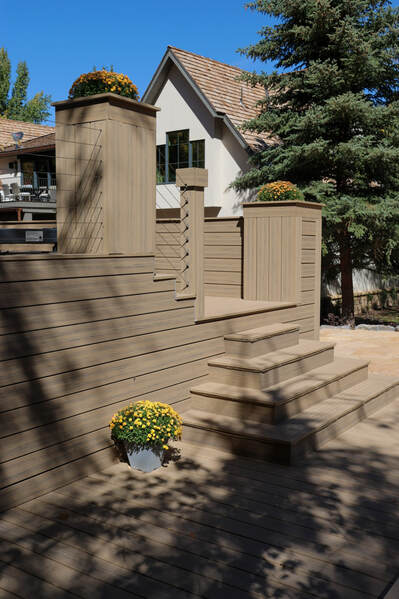
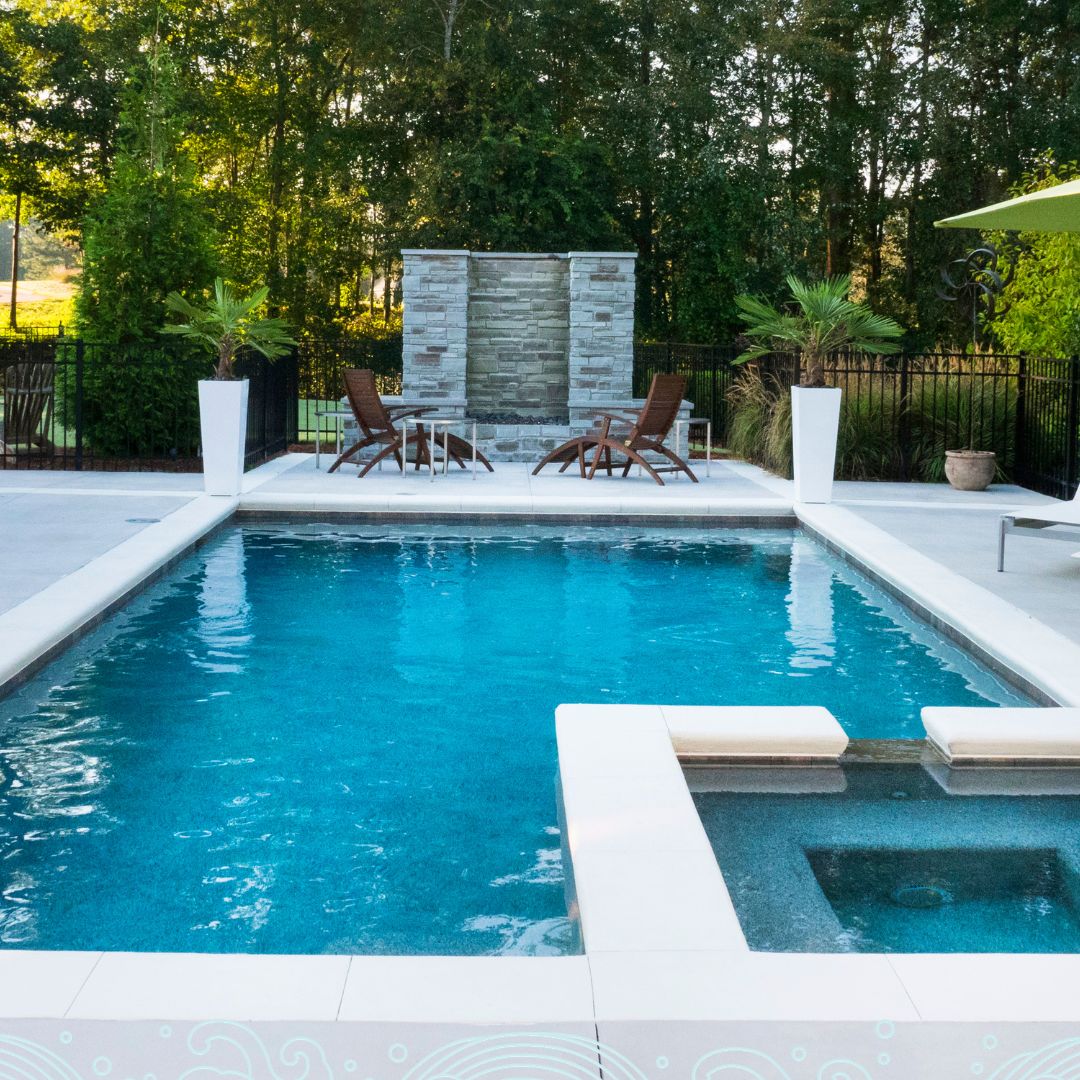
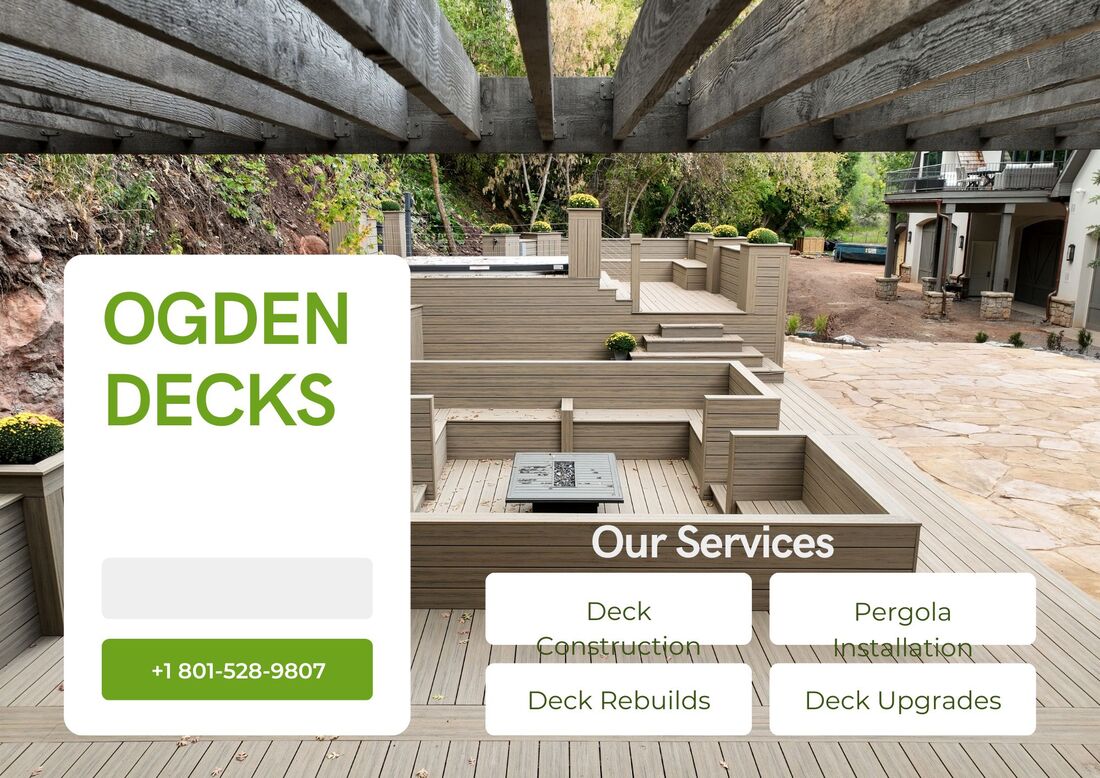
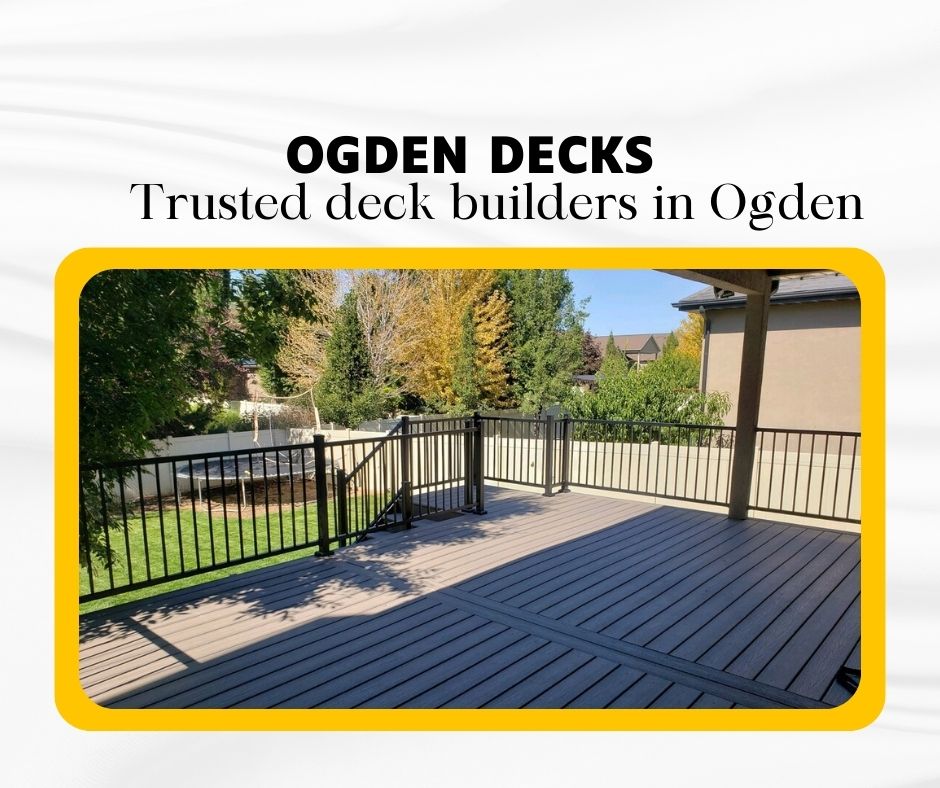
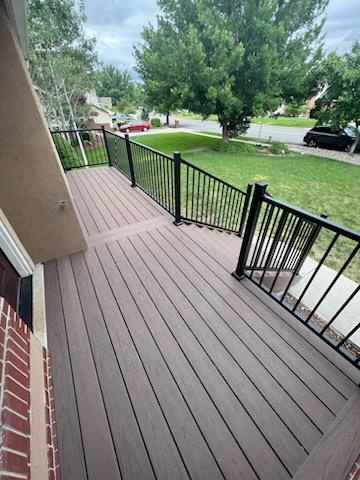

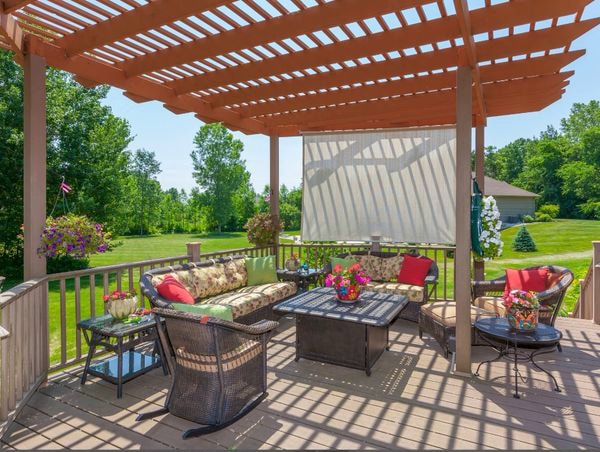

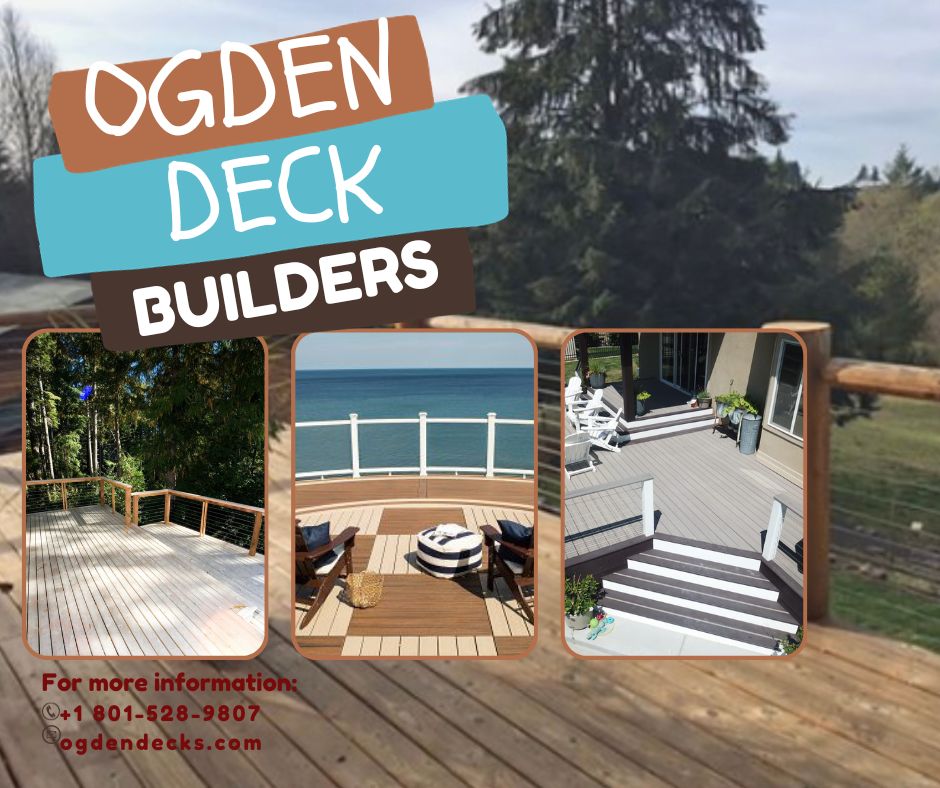
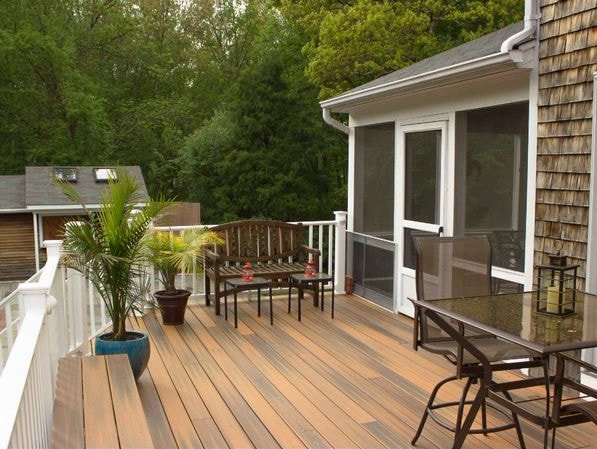
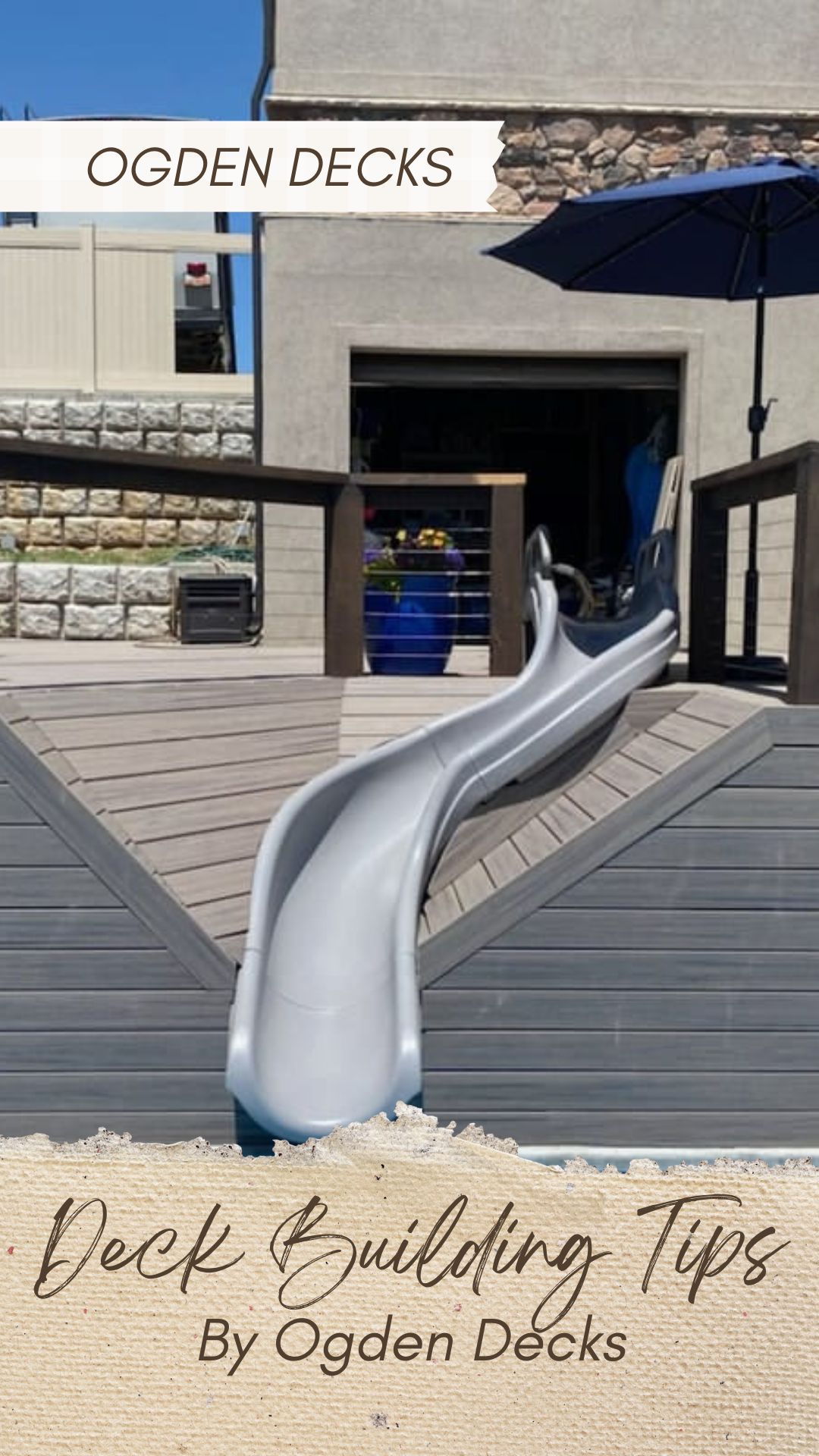
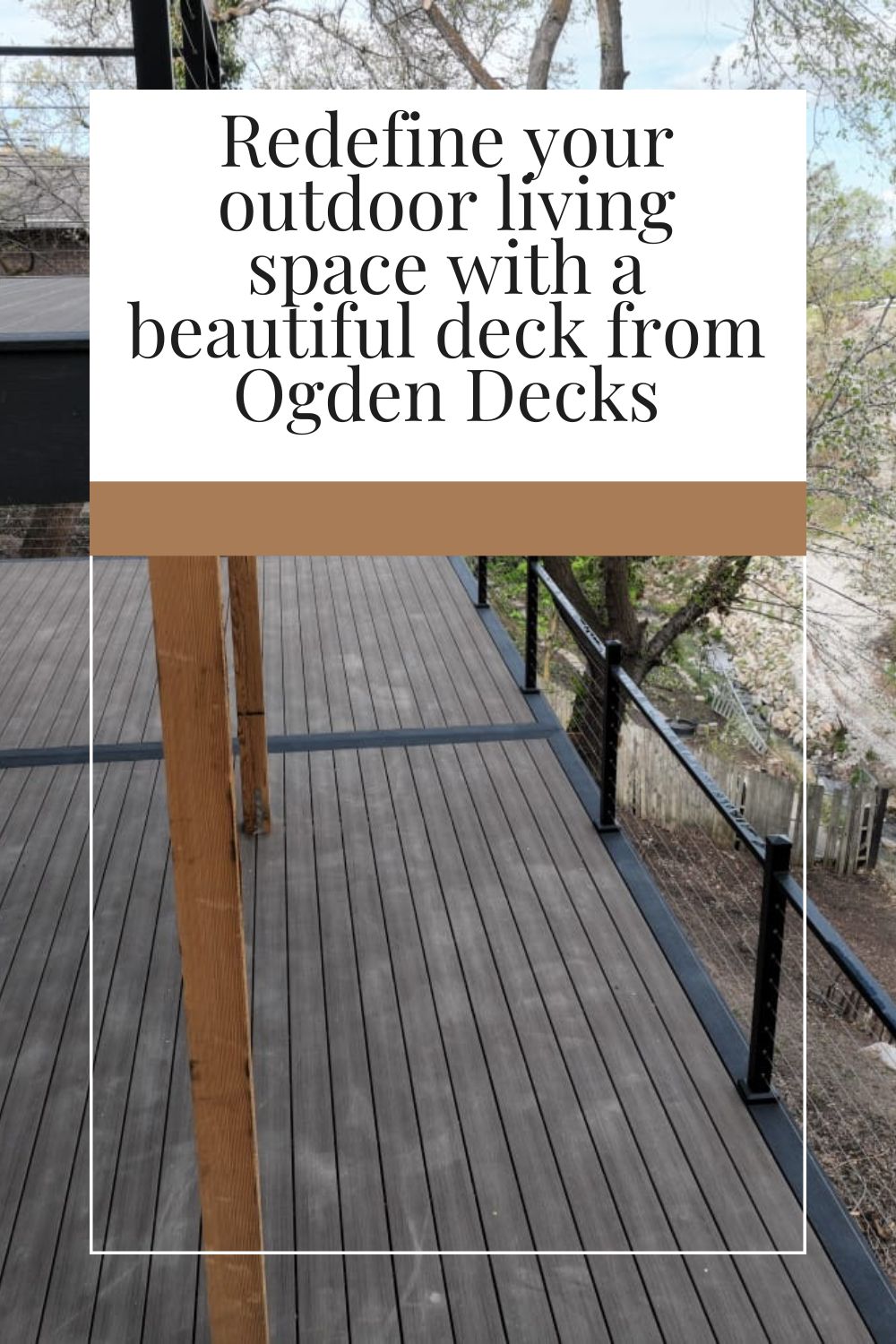
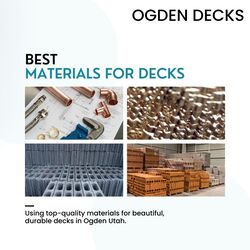
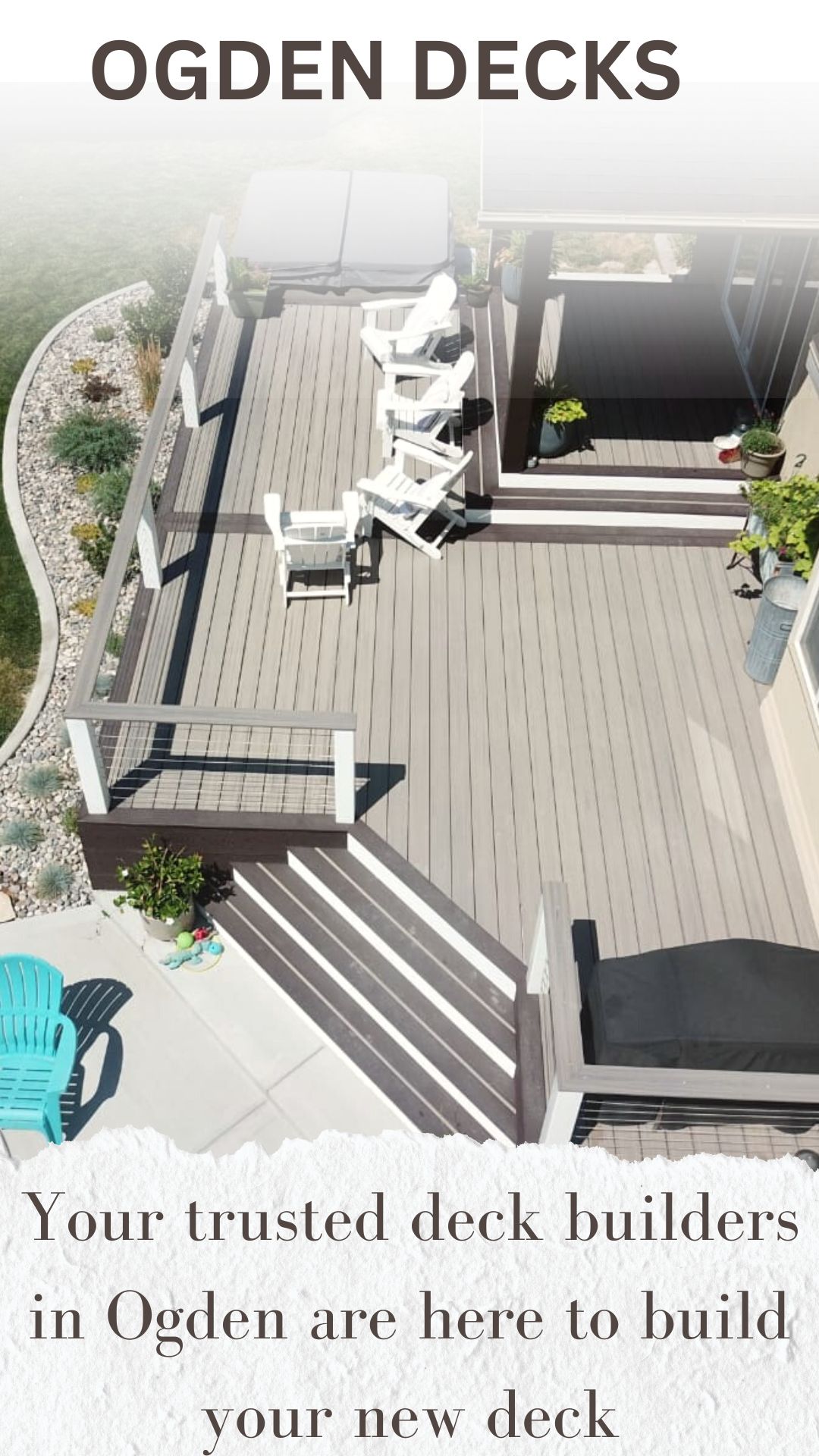
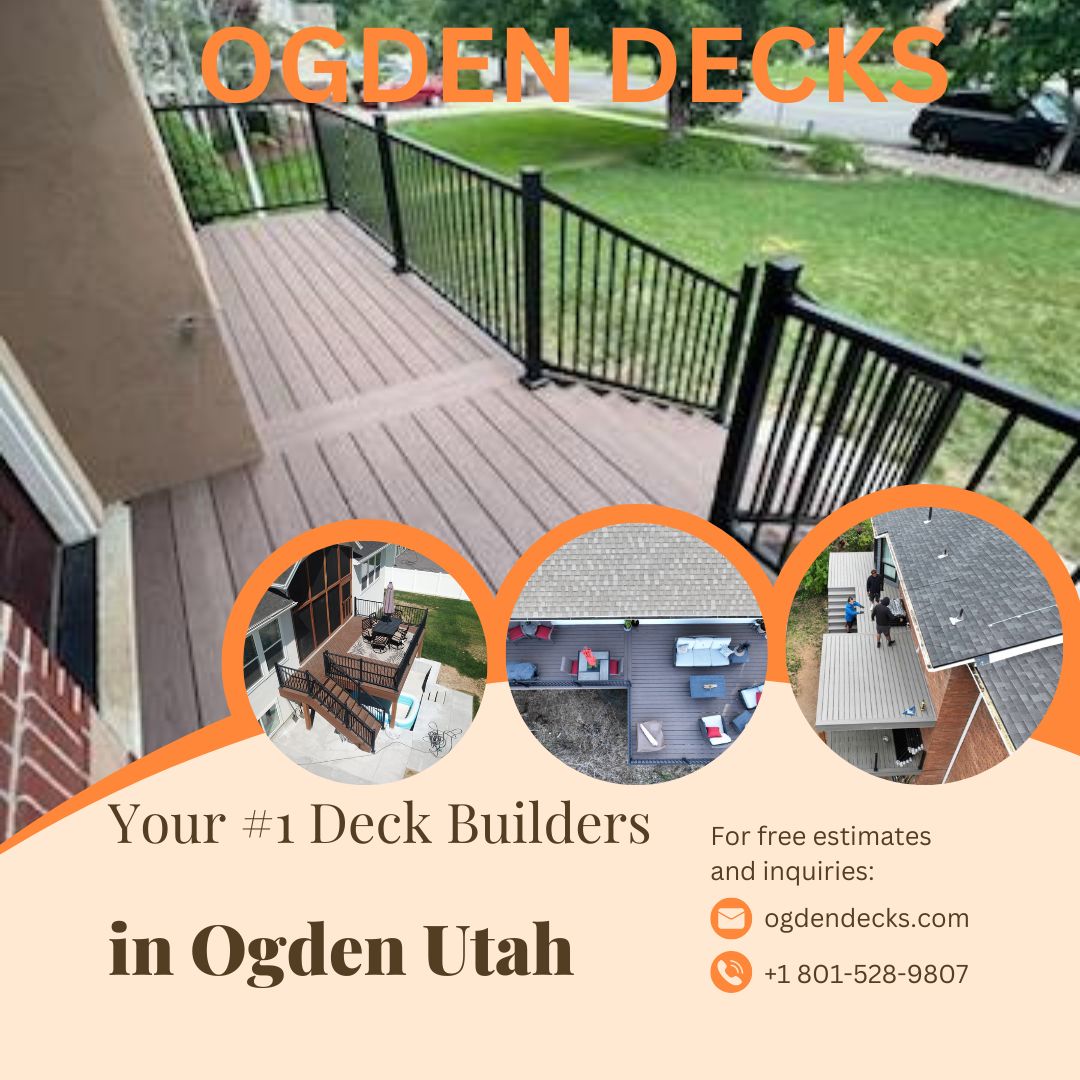
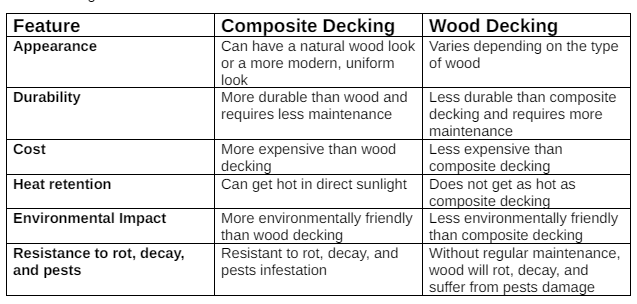
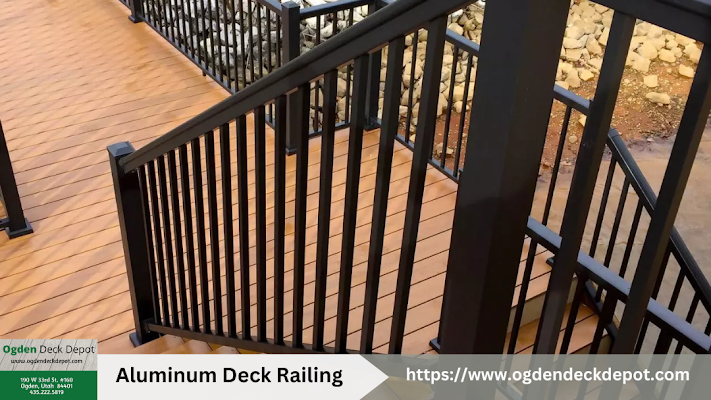
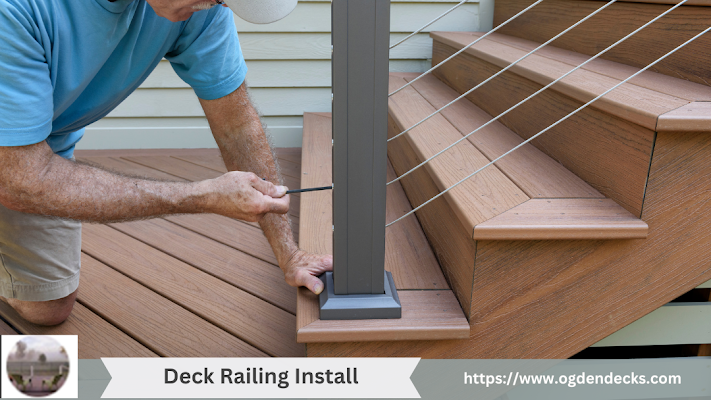
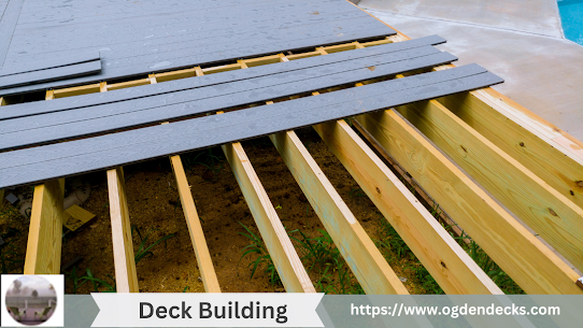
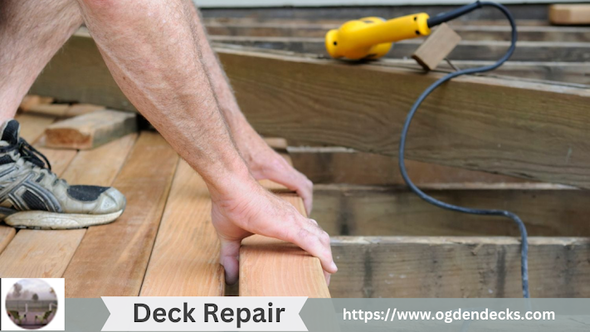
 RSS Feed
RSS Feed
